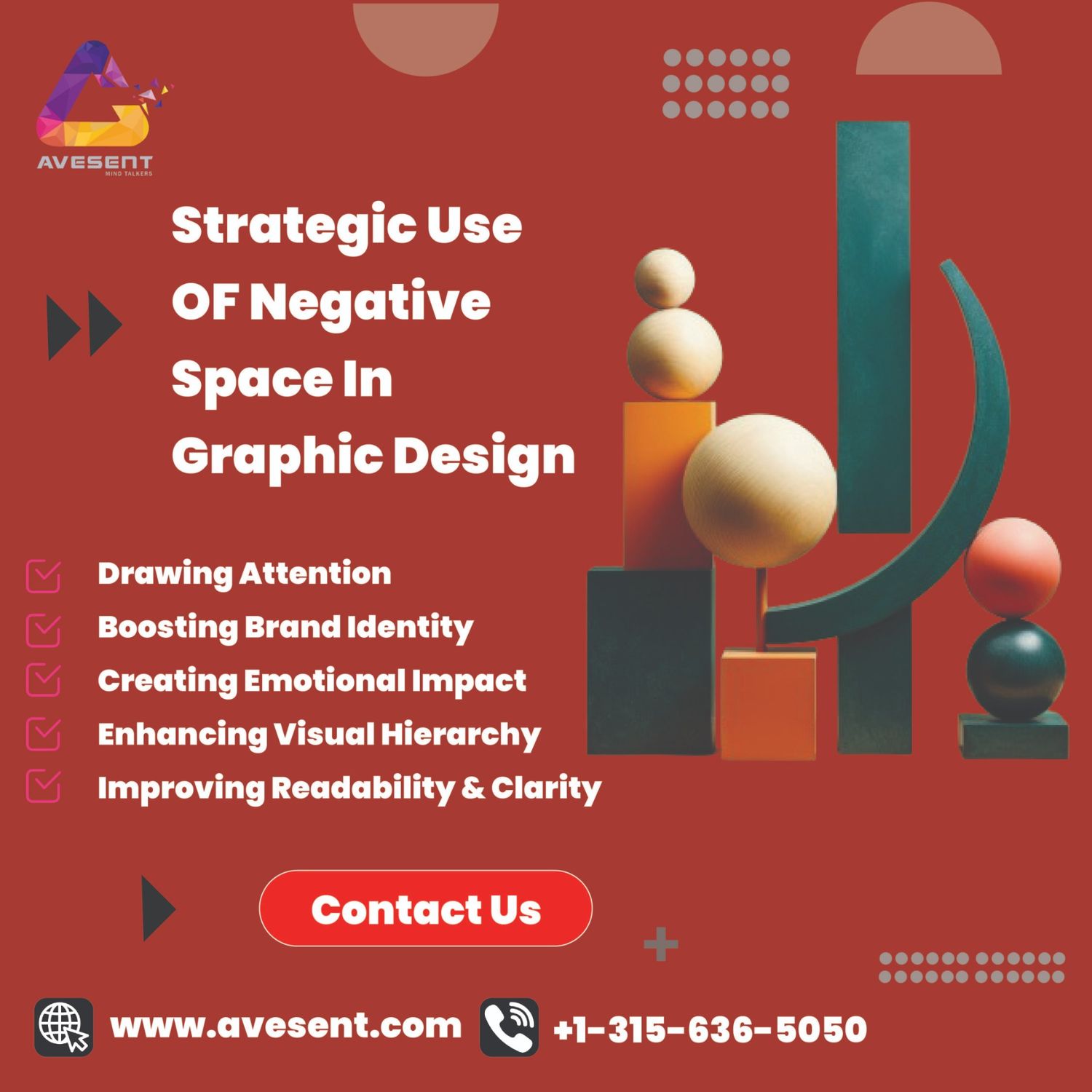Negative space, often referred to as white space, is a fundamental yet often underestimated element in graphic design. Here’s how digital marketing agencies in India can strategically use negative space to elevate their design game and captivate audiences:
Understanding Negative Space:
Negative space isn’t just the empty areas in a design; it’s a powerful tool that shapes the overall visual experience.
Enhancing Visual Hierarchy:
Balancing Elements: Negative space helps in balancing the visual elements, allowing important elements to stand out.
Guiding Focus: It guides the viewer’s eyes to the key message or focal point, improving readability and comprehension.
Boosting Brand Identity:
Minimalistic Approach: Using negative space smartly can create a sophisticated and minimalistic design approach, which often aligns with modern branding aesthetics.
Memorability: Cleverly using negative space can make a brand’s logo or identity more memorable and recognizable.
Creating Emotional Impact:
Emphasizing Emotions: Negative space can evoke emotions by accentuating the mood or sentiment of a design.
Conveying Simplicity: Minimalistic designs with well-utilized negative space often convey a sense of calmness and simplicity.
Improving Readability and Clarity:
Reducing Clutter: Negative space declutters the design, making it easier for the audience to absorb information.
Legibility: Properly spaced elements enhance legibility and comprehension, especially in content-heavy designs.
Drawing Attention:
Attention-grabbing: Well-used negative space can be eye-catching, drawing attention to specific elements or messages.
Creating Intrigue: It can also create intrigue and curiosity, compelling viewers to engage further with the design.
Crafting Engaging Advertisements:
Advertisement Design: In advertising, negative space can amplify the impact of the message, drawing the viewer’s attention to the essential elements of the ad.
Social Media Graphics: For social media campaigns, judicious use of negative space can make posts and ads stand out in crowded feeds.
Implementing in Web Design:
Website Layout: Negative space in web design enhances user experience by offering breathing room between elements, ensuring a pleasant browsing experience.
Mobile Responsiveness: Properly used negative space is crucial for mobile responsiveness, ensuring designs remain clear and functional across devices.
Experimenting and Innovating:
Creative Freedom: Don’t be afraid to experiment with negative space creatively. Encourage designers to innovate and think outside the box.
Feedback and Iteration: Embrace an iterative design process, seeking feedback and making refinements to optimize the use of negative space.
Case Studies and Examples:
Showcase successful design examples from various industries, highlighting how negative space played a pivotal role in their success.
For digital marketing agencies in India, mastering the strategic use of negative space is pivotal in creating impactful and visually engaging designs that resonate with audiences, elevate brand identities, and drive meaningful engagement.





